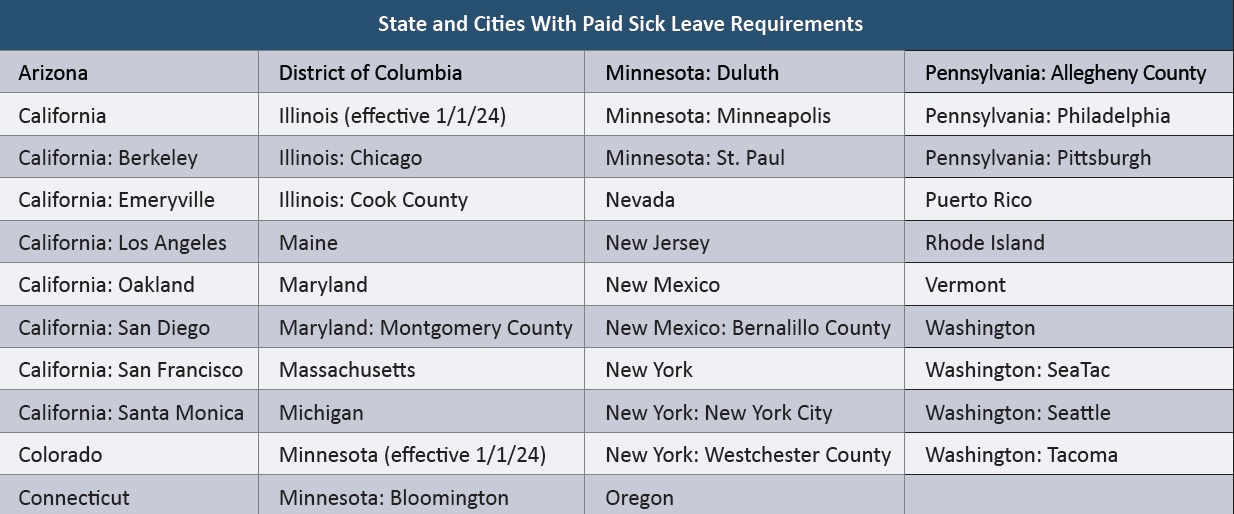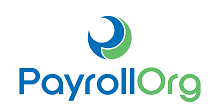Increasing Awareness of State, Local Sick Leave Programs

American history contains many essential moments where federal and state governments sought a balance with which laws take precedence. A payroll professional must be familiar with the different circumstances where federal and state laws and regulations intersect, especially when a state law and regulation (or local ordinance and regulation) is more beneficial to an employee than those under federal law. Let’s look at some examples of this, especially regarding paid leave.
Federal Paid Leave Requirements
Payroll departments should collaborate with HR departments to maintain compliance, especially if they have employees working in multiple states and cities.
Many workers choose to be an employee rather than an independent contractor because the employee-employer relationship provides certain benefits. Companies initially offered benefits as a mechanism to attract and retain workers. For example, 30 years ago, it was not uncommon for a career employee with a single employer to be paid out or have their retirement credited for unused leave balances on retirement. As different generations entered the workforce with their own values and expectations, company benefits also changed to respond to rising costs and competitiveness.
Some employees mistakenly assume federal laws entitle them to paid leave. According to the U.S. Department of Labor (DOL) website, there are currently no federal legal requirements for paid sick leave. For companies subject to the Family and Medical Leave Act (FMLA), the Act does require unpaid sick leave. The DOL website addresses vacation leave in this respect, stating that the FLSA does not require payment for time not worked, such as vacations, sick leave, or federal or other holidays. These benefits are matters of agreement between an employer and an employee (or the employee's representative). Some employers responsible for government contracts may be subject to exceptions under specific conditions.
An exception to the above was the Families First Coronavirus Response Act (FFCRA), which illustrates the awareness and adaptability required by a payroll department. The FFCRA, which was enacted in March 2020 and expired December 31, 2020, contained requirements that employers provide paid sick leave and expanded family and medical leave under specific circumstances.
State and Local Paid Leave Requirements
States and cities have also taken an active role in the past few decades to reflect their constituents’ values to retain talented and desirable potential employees. The rise in “gig workers,” independent contractors, the prevalence of part-time jobs, and demand for technical skillsets has fueled states to actively pursue specific employers and industries to increase revenue capabilities and better respond to debt levels. The legislative response at the state and local levels regarding sick leave becomes an area requiring payroll professionals’ attention.
The table reflects the current states and localities with paid sick leave programs, as outlined in PayrollOrg’s Guide to State Payroll Laws, §9.2.

While paid sick leave benefits and eligibility may vary between states and localities, it clearly reflects states legislatively taking a position. According to a 2019 report published by Washington, D.C.-based Urban Institute, the nation's first policy requiring employers to provide paid sick days was implemented in San Francisco in 2007. Five years later, Connecticut became the first state in the nation to enact paid-sick-days legislation. Some states may have passed preemption laws preventing localities from requiring employers to provide paid sick leave, but that stance has decreased over the past decade.
Although paid sick leave legislation is seen by many as positive for workers, it can be an additional legislative and regulatory complexity for payroll professionals and HR departments. Many employers allowed employees to work remotely during the COVID-19 pandemic, and this practice still continues with many companies. The ability for employees to work remotely was critical to many companies functioning during the pandemic and afterward, but having employees working in another state and locality can expose a company to other requirements.
For example, the criteria for defining a covered employer for Berkeley, California was partially satisfied if employees worked two hours a week in the city. In Tacoma, Washington, the criteria for a covered employer included all private employers with at least one employee working more than 80 hours within the city limits during the benefit year, regardless of the employer's location.
Consequently, the payroll department should impress upon its leadership the importance of compliance and the more considerable impact that change can cause existing HCM system modifications and business process revisions.
Michael Dupuis, CPP, PMP, SHRM-SCP, is a functional consultant with Huron Consulting Group, specializing in implementing payroll, HR, and time and attendance systems. He is also a member of PayrollOrg’s Board of Contributing Writers for PAYTECH.
